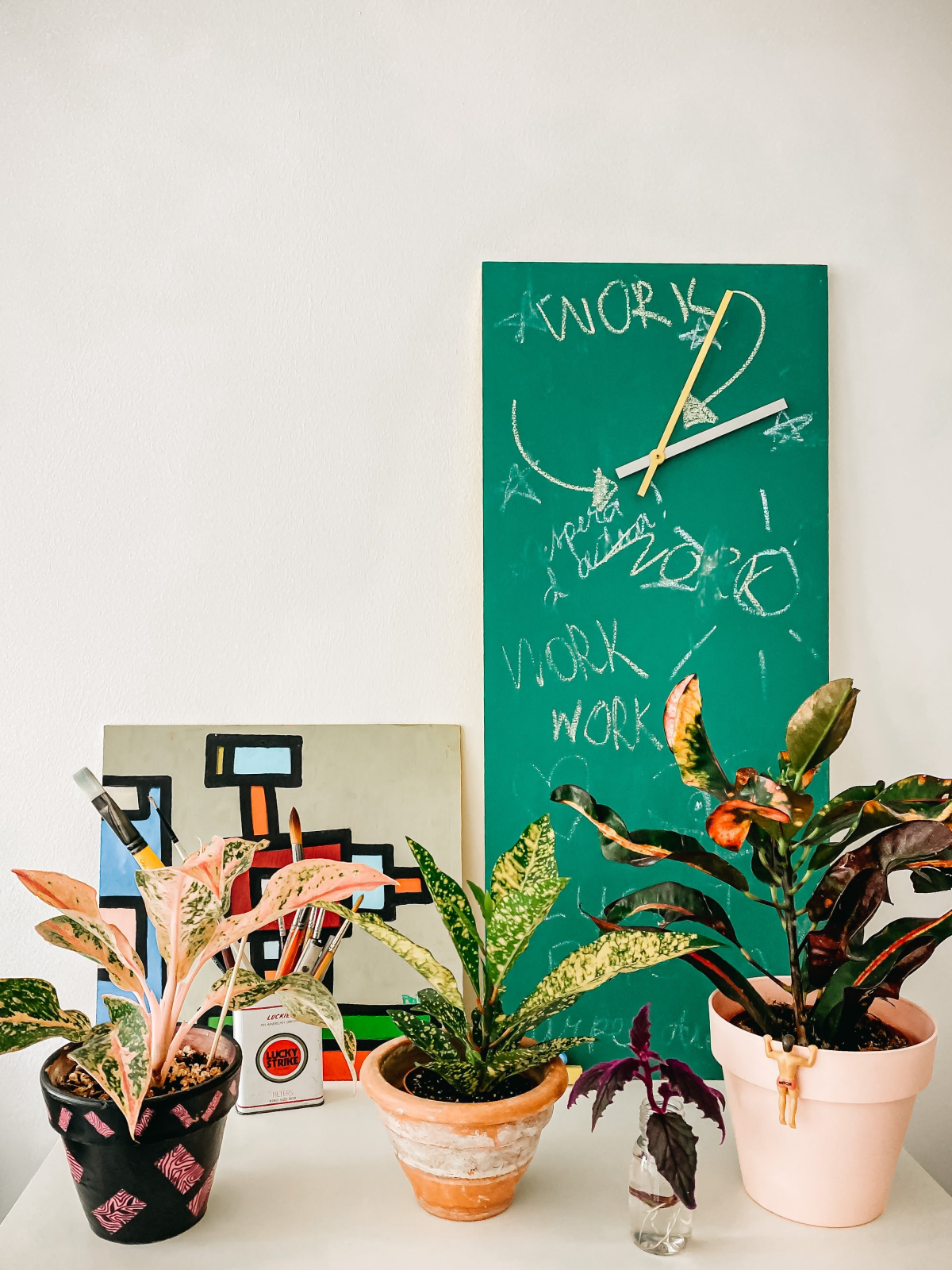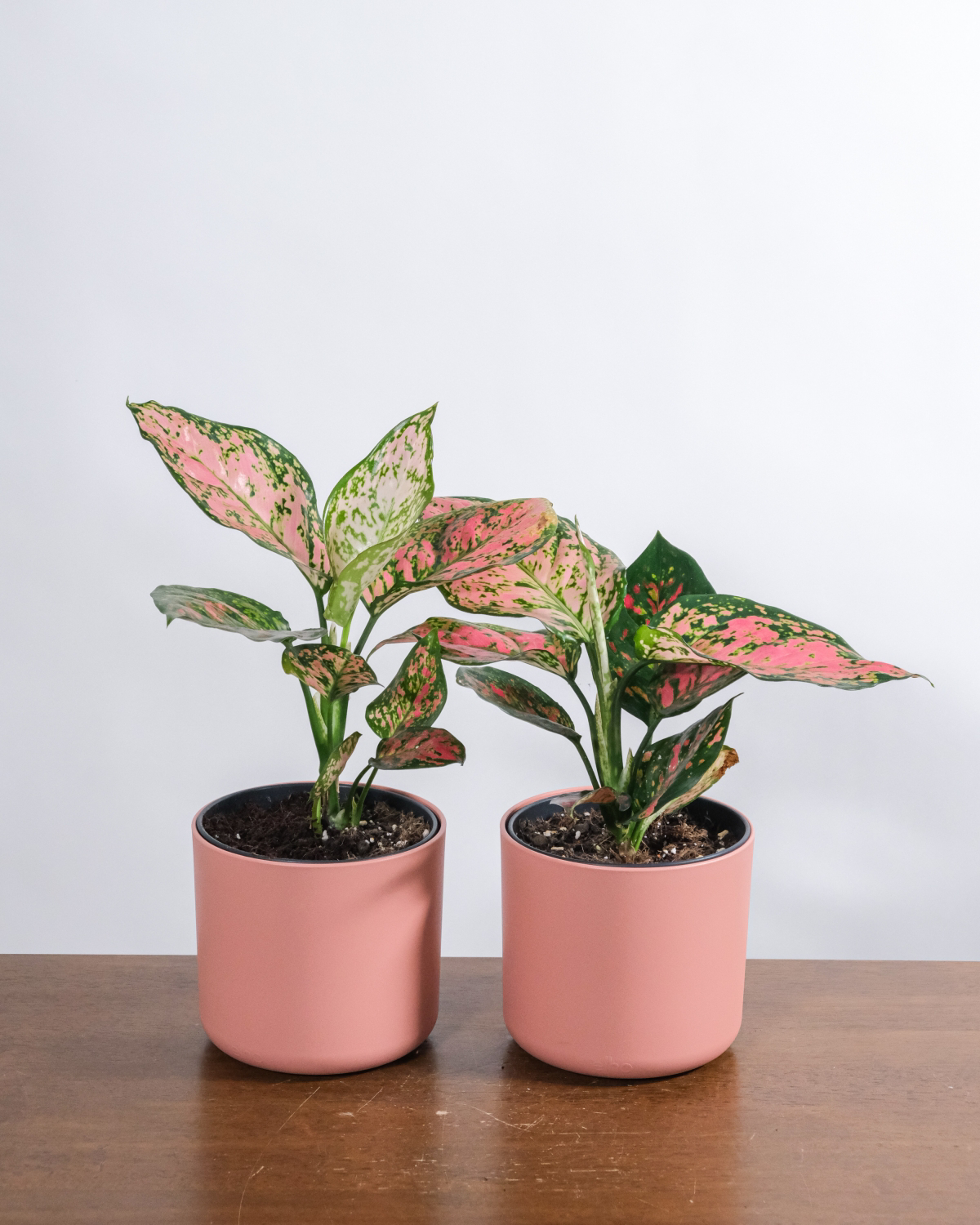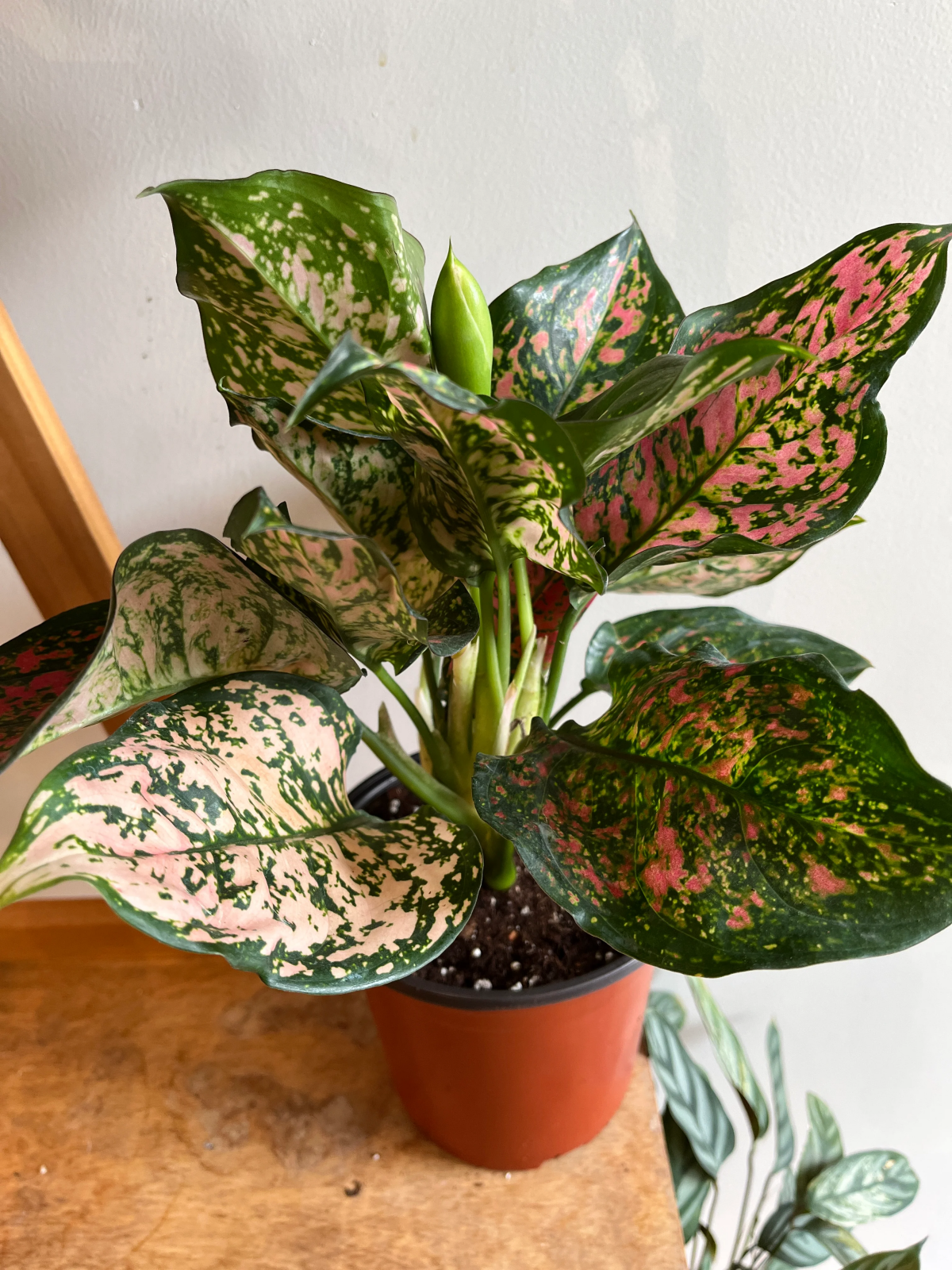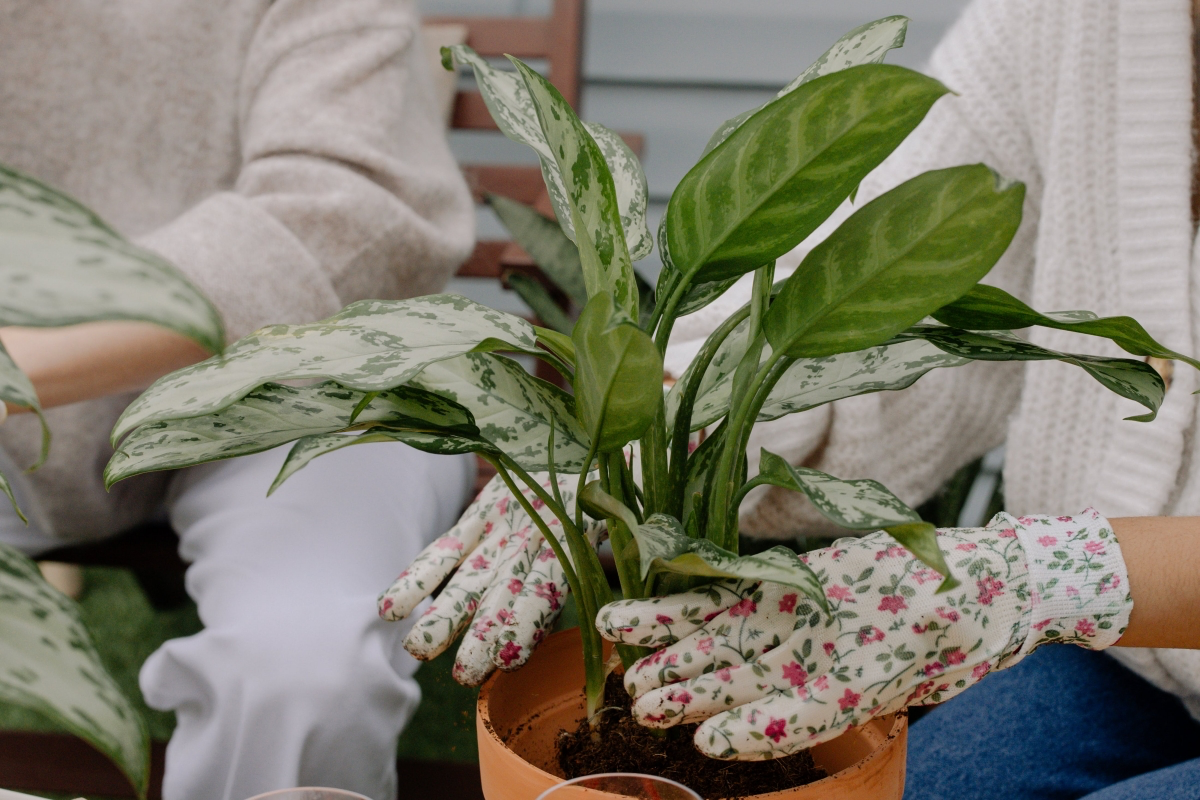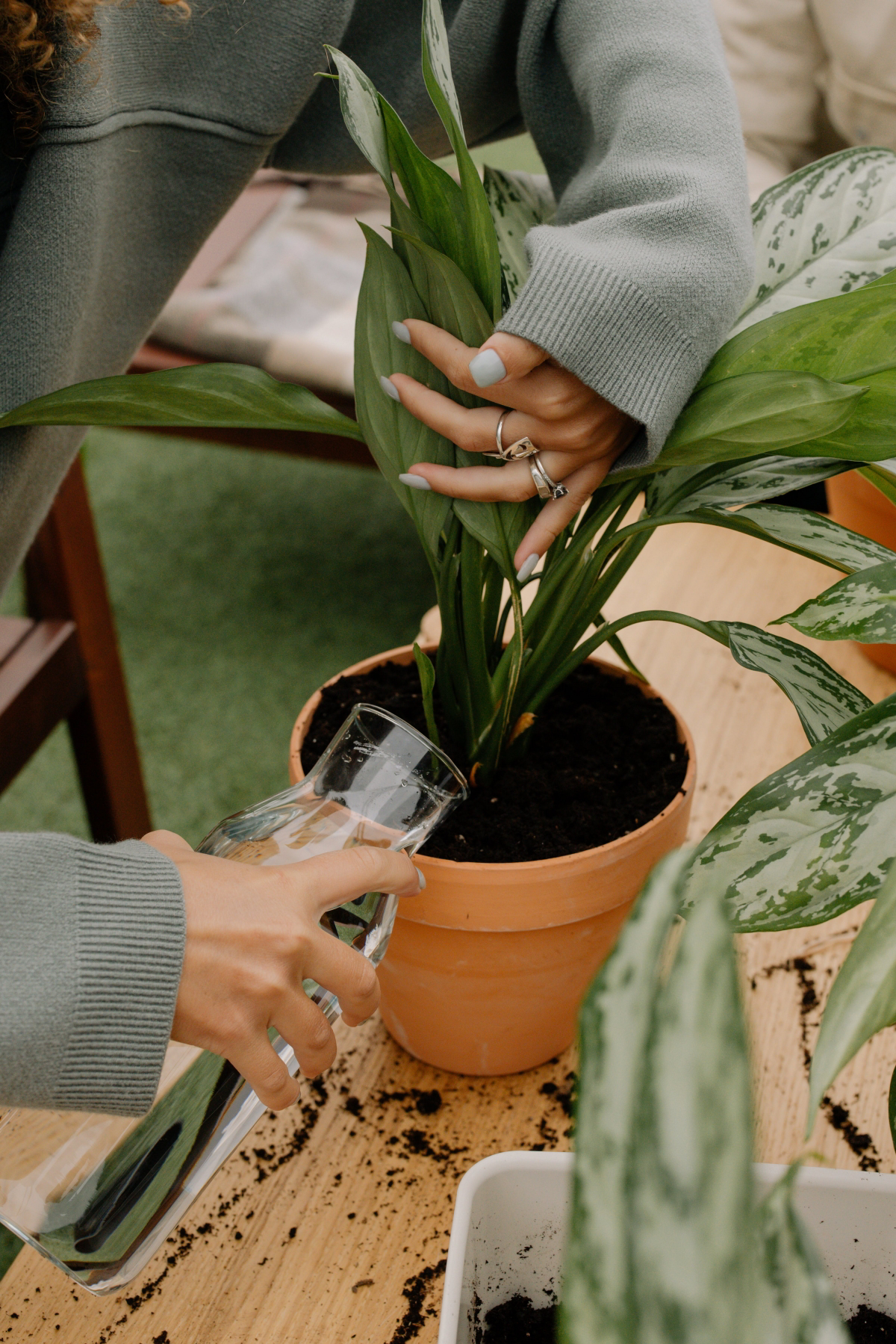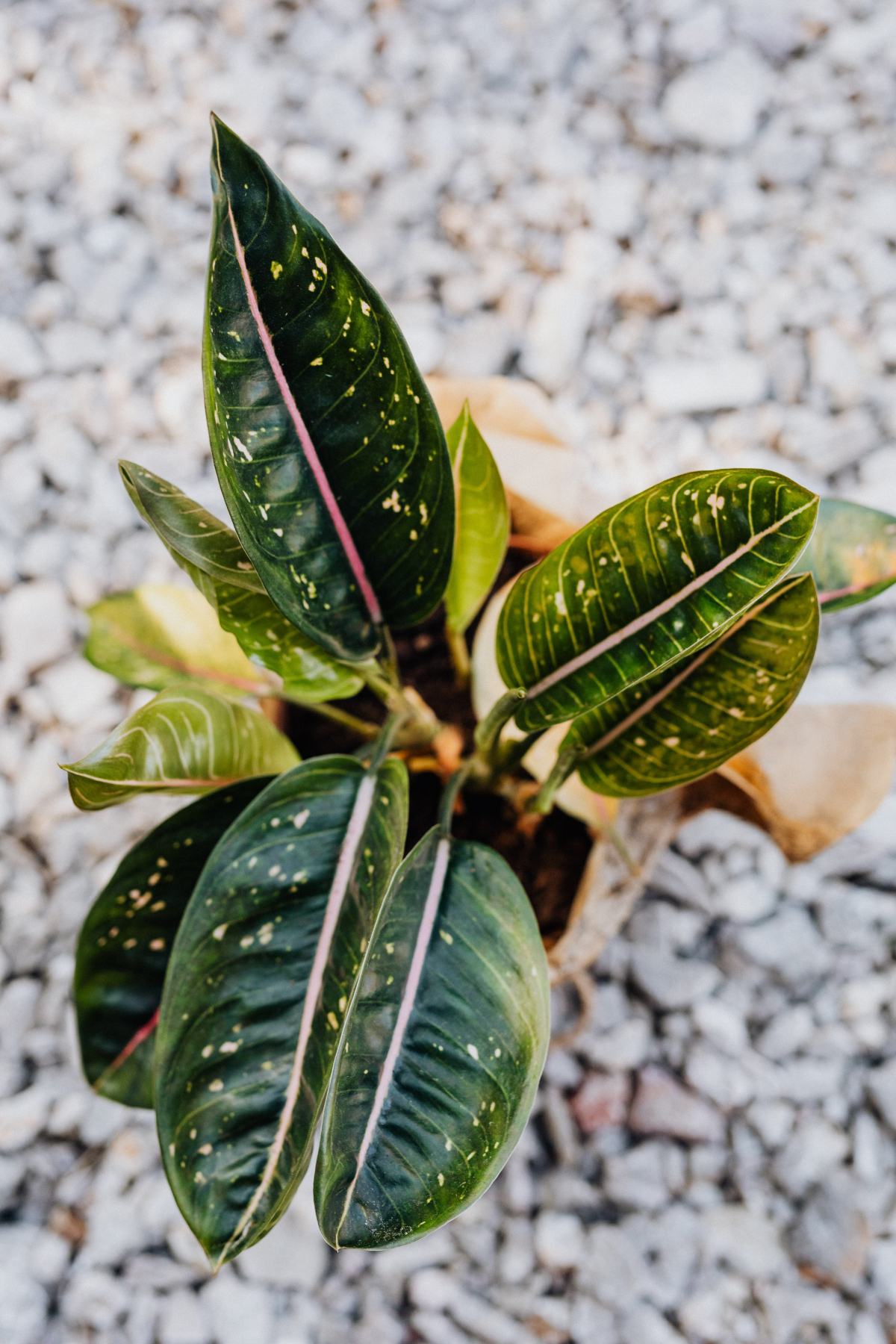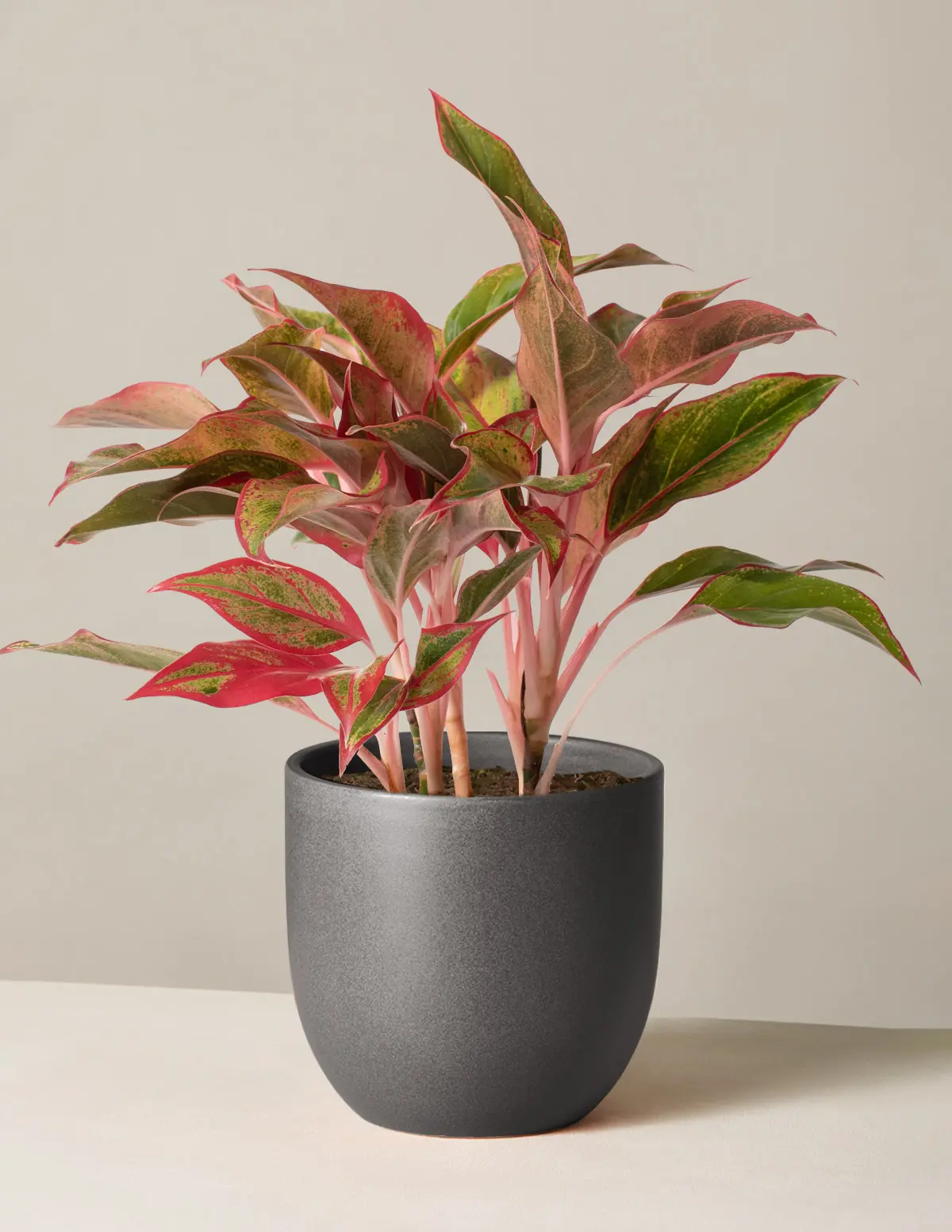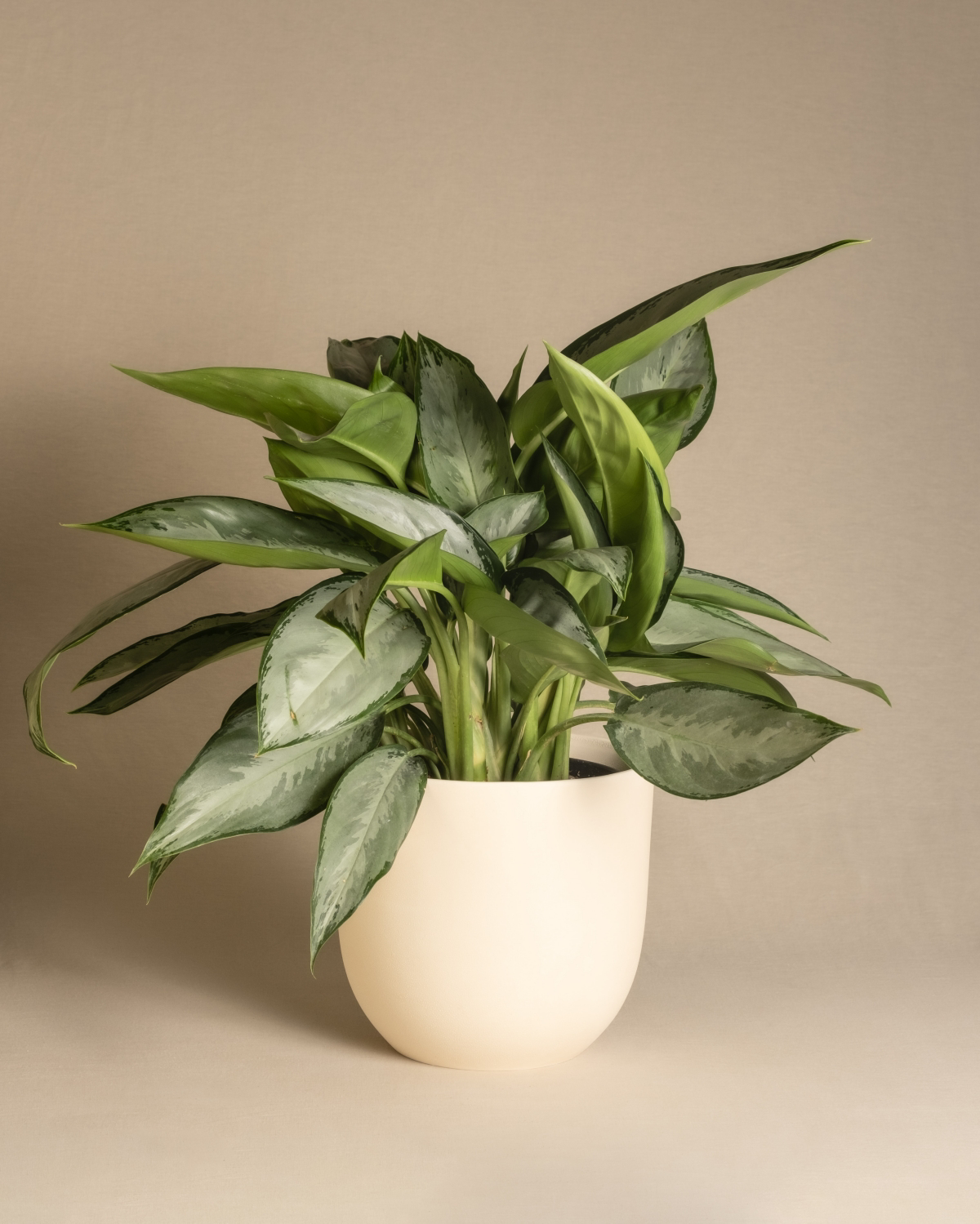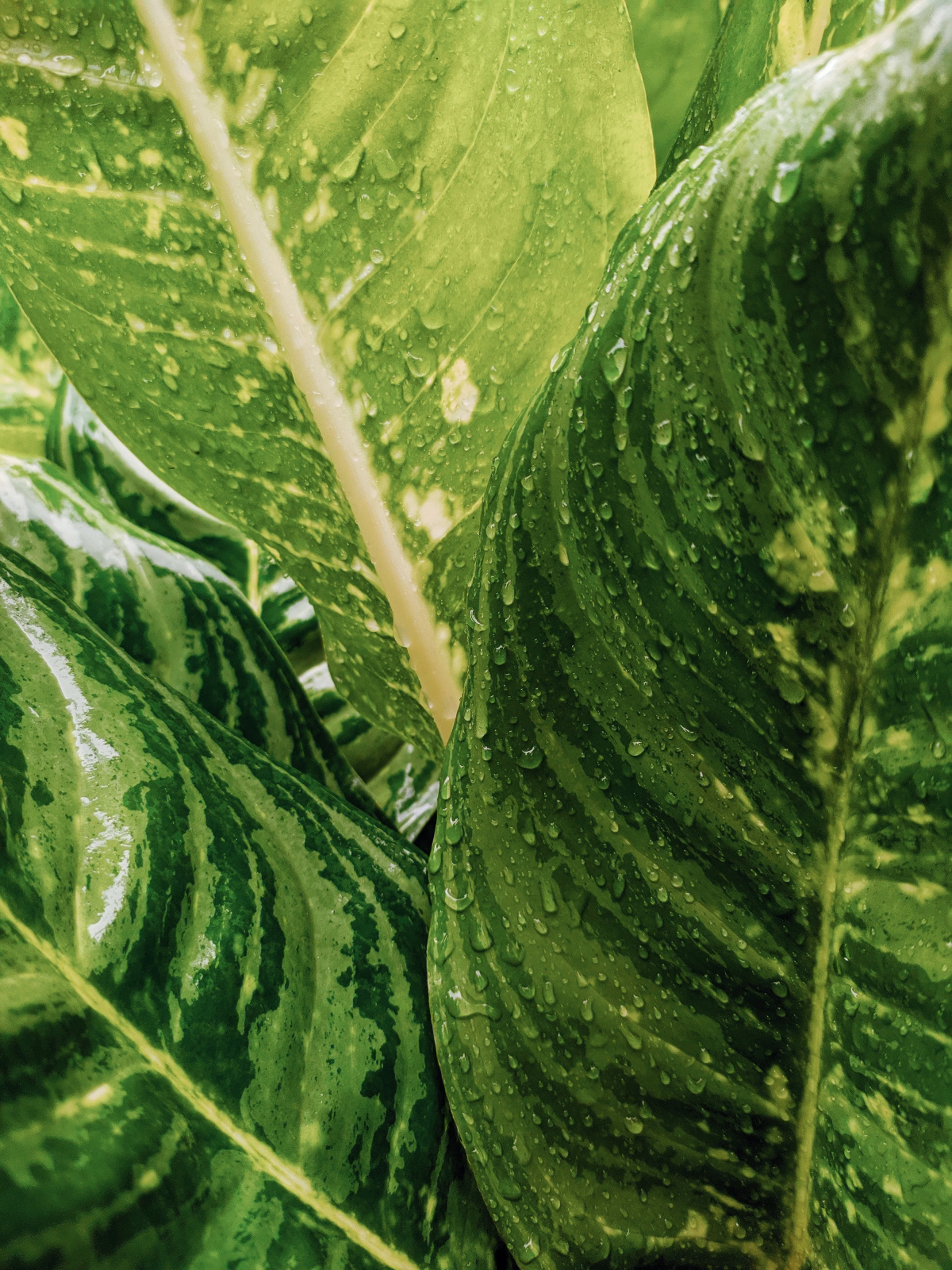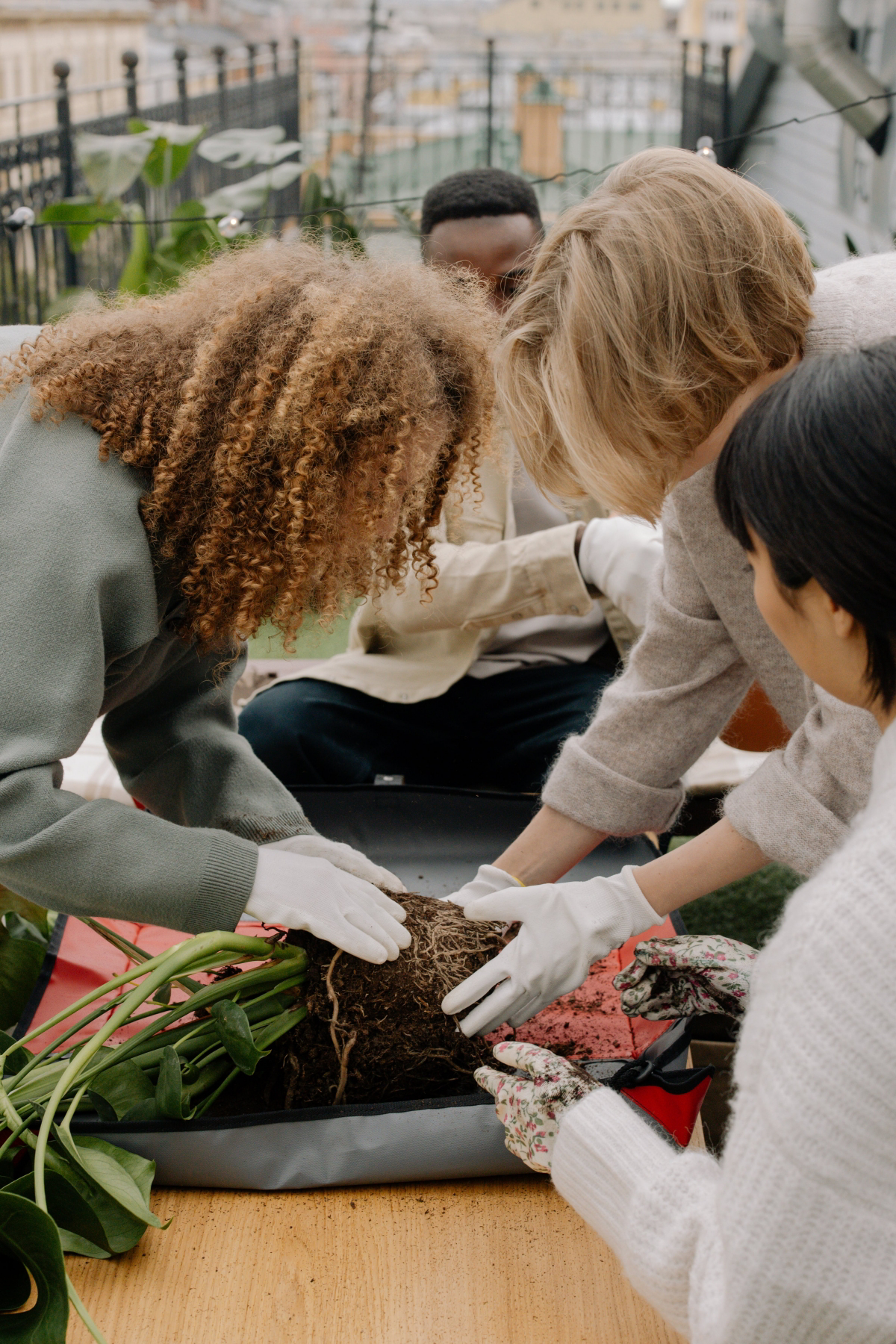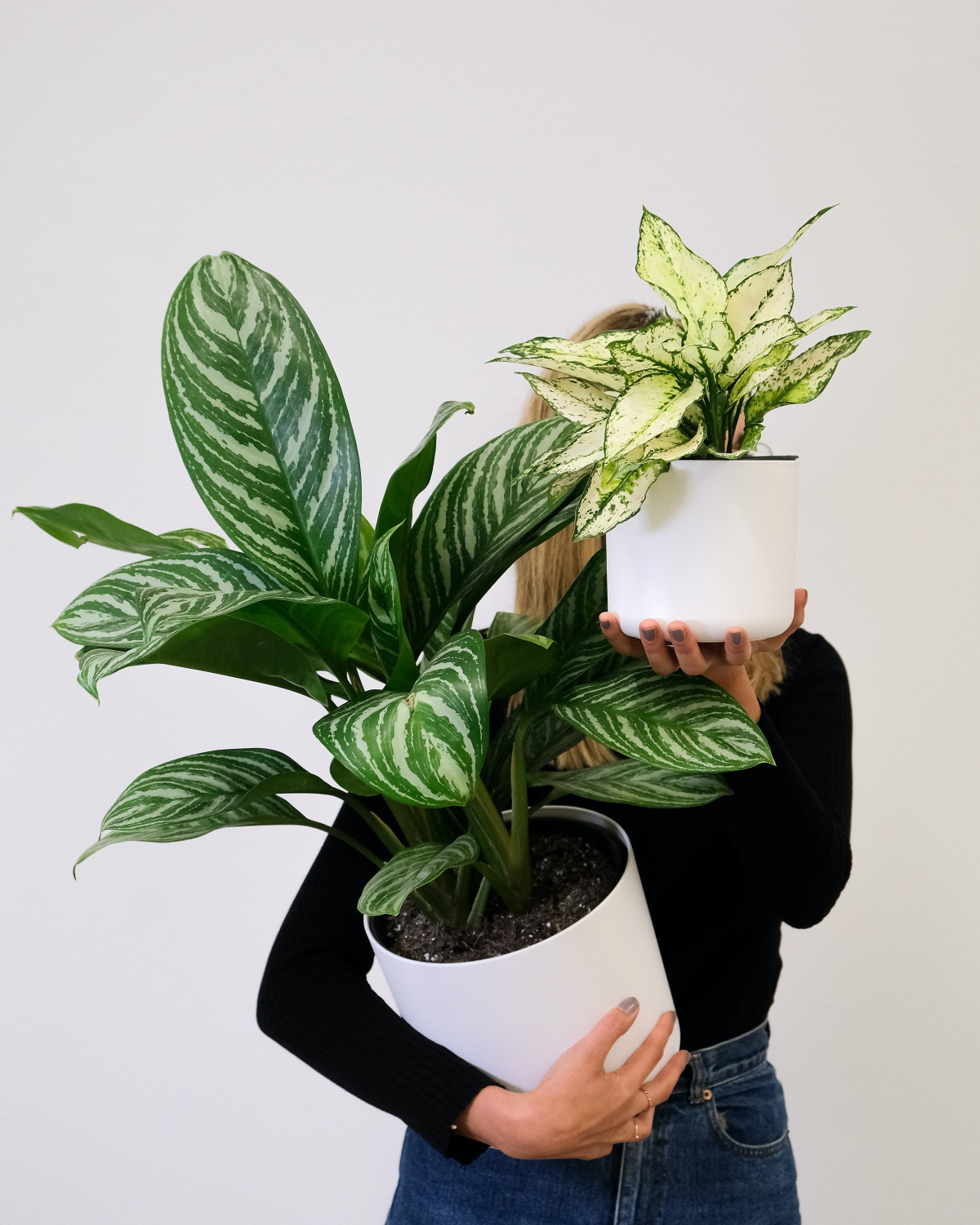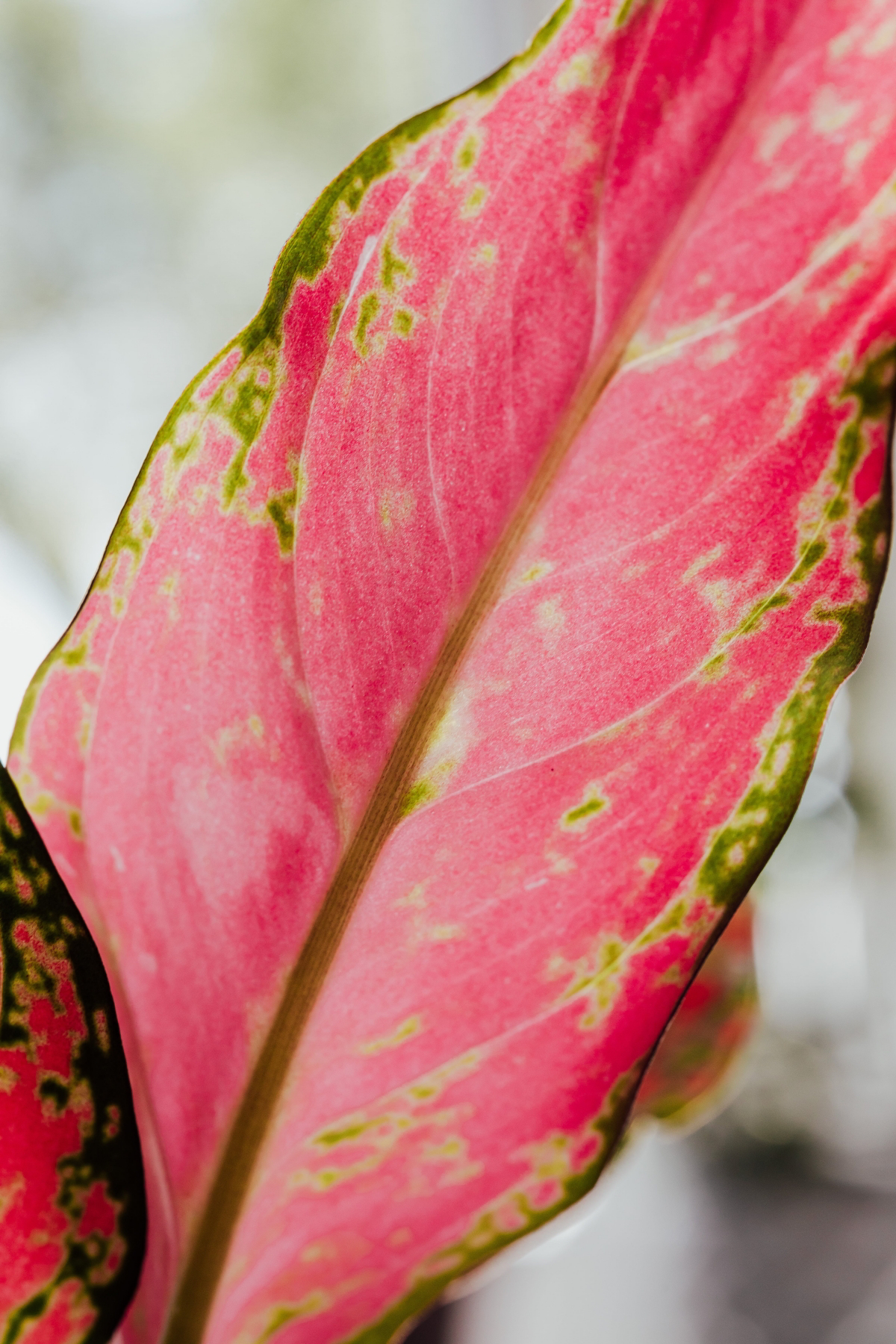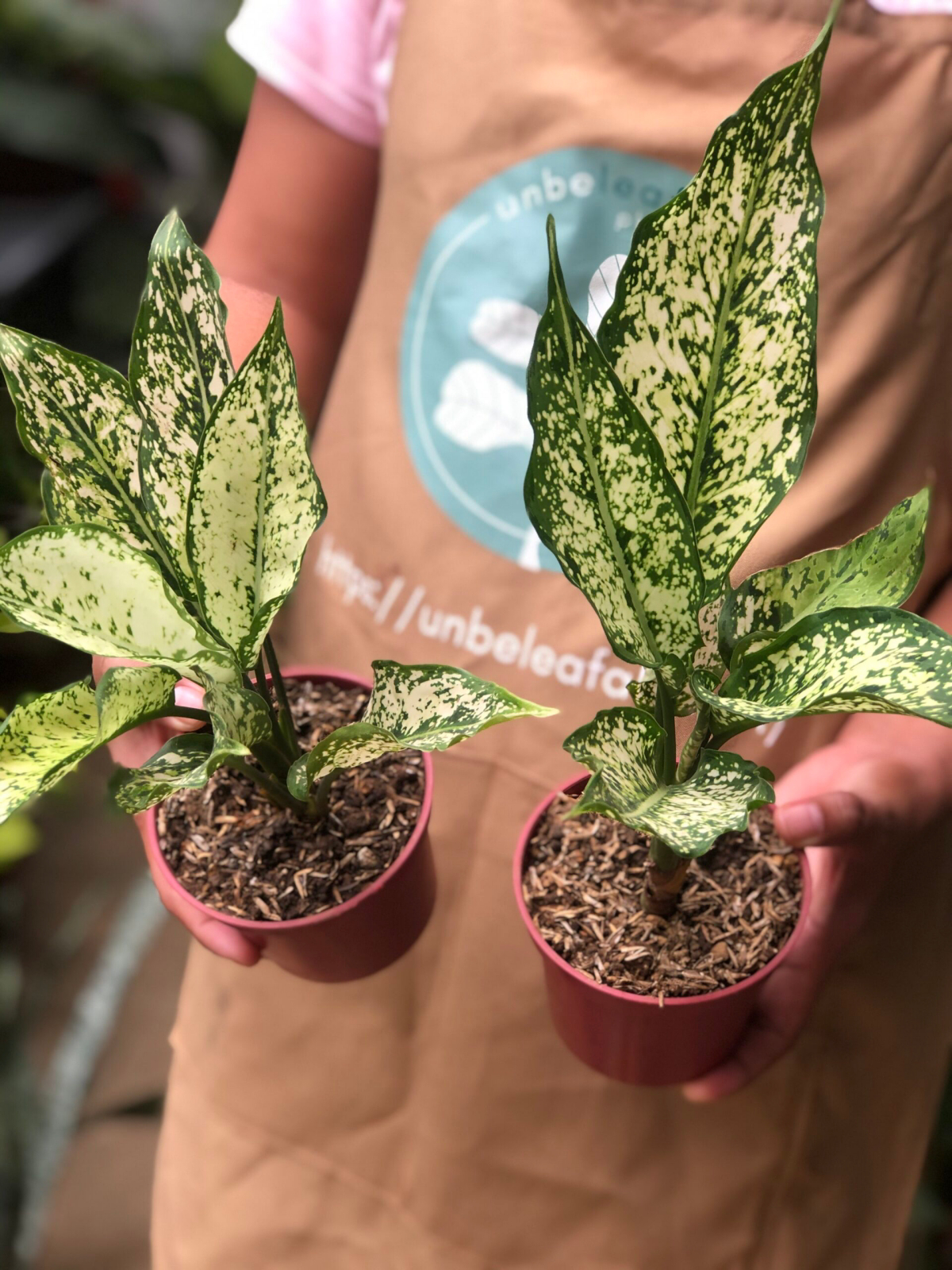The Aglaonema Care Handbook: Watering, Soil, Pests & More
In the world of indoor plants, there’s one green companion that effortlessly combines beauty with resilience – the Aglaonema. Whether you’re a seasoned plant enthusiast or just dipping your toes into the world of greenery, the Aglaonema, often fondly called the “Chinese Evergreen,” is a captivating addition to any space. With its vibrant foliage, air-purifying qualities, and forgiving nature, it’s no wonder that the Aglaonema has become a staple in the homes of plant lovers worldwide. In this comprehensive guide, we’ll unravel the secrets of nurturing and caring for your Aglaonema, ensuring it thrives and graces your space with its elegance.
Time to explore the beauty of the tropical Aglaonema
In this article
What is an Aglaonema?
In the enchanting world of indoor plants, the Aglaonema, often affectionately referred to as the “Chinese Evergreen,” reigns as a beloved and charismatic member. This tropical beauty, with its stunning foliage and graceful demeanor, has captured the hearts of plant enthusiasts worldwide. But what exactly is an Aglaonema, and what makes it a must-have addition to your indoor garden? The Aglaonema is a remarkable genus of flowering plants native to the lush rainforests of Southeast Asia, predominantly found in countries like Thailand, Malaysia, and the Philippines. Its name, derived from the Greek words “aglos” (bright) and “nema” (thread), aptly describes the plant’s vibrant and intricate leaf patterns, resembling the bright threads of nature’s tapestry.
Its name is derived from the Greek words “aglos” (bright) and “nema” (thread)
Aglaonema Varieties
Diversity is the hallmark of the Aglaonema family, with an array of captivating varieties that cater to every aesthetic preference. Here are some popular Aglaonema varieties that will undoubtedly pique your interest:
- Aglaonema Silver Bay: This variety boasts striking silver-gray leaves with green edges, creating a bold and sophisticated appearance.
- Aglaonema Red Lipstick: With deep green leaves adorned by bright red veins, this variety is reminiscent of an artist’s palette, adding an artistic touch to your space.
- Aglaonema Cutlass: Sporting long, slender leaves with a silver-green sheen, the Aglaonema Cutlass adds an air of elegance and charm to any room.
- Aglaonema Maria: Characterized by its dark green leaves adorned with delicate silver patterns, the Aglaonema Maria is a timeless classic among Aglaonema enthusiasts.
- Aglaonema Pink Moon: As its name suggests, this variety features soft pink undertones on its leaves, lending a gentle and romantic ambiance to your space.
- Aglaonema Diamond Bay: With its striking, diamond-like patterns and glossy leaves, the Aglaonema Diamond Bay is a true gem among houseplants.
- Aglaonema Siam: Featuring captivating patterns of deep green and silver, the Aglaonema Siam adds a touch of exotic beauty to your indoor garden.
- Aglaonema Golden Bay: This variety is a vision of opulence with its lush green leaves adorned with golden accents, exuding an aura of luxury.
- Aglaonema Spring Snow: For a delicate and refreshing appearance, the Aglaonema Spring Snow offers a blend of green and silver hues, reminiscent of a pristine winter landscape.
- Aglaonema Stripes: True to its name, this variety showcases bold and vibrant stripes that create a visually captivating display of color and contrast.
Each Aglaonema variety has its unique charm, making it a delightful journey of exploration for plant enthusiasts and decorators alike. Whether you prefer the understated elegance of the Silver Bay or the bold allure of the Red Lipstick, there’s an Aglaonema variety to suit every taste and style.
There is an array of captivating varieties that cater to every aesthetic
Who Should Get an Aglaonema?
Now, you might wonder if an Aglaonema is the right choice for you. Well, if you’re someone who appreciates the beauty of lush, green foliage and desires to infuse your space with natural elegance, an Aglaonema is an excellent companion. Whether you’re a seasoned plant enthusiast with a home full of green companions or a newcomer eager to embrace the world of indoor gardening, the Aglaonema welcomes you with open leaves. It’s an ideal choice for anyone seeking to add a touch of tranquility and charm to their living environment.
Choose this plant if you want to infuse your space with natural elegance
Benefits of Owning an Aglaonema
The Aglaonema is more than just a pretty face. It offers a range of benefits that make it a worthwhile addition to your home:
- Air Purification: Aglaonemas are known for their air-purifying qualities. They can help remove common indoor pollutants, enhancing the air quality in your home.
- Low Maintenance: These plants are forgiving and relatively low-maintenance, making them perfect for busy individuals or those new to plant parenting.
- Versatility: Aglaonemas thrive in various indoor conditions, from bright, indirect light to lower light levels. They can adapt to your space’s unique lighting conditions.
- Elegant Foliage: The stunning foliage of Aglaonemas adds a touch of sophistication to any room. Their lush leaves come in a variety of colors and patterns, allowing you to choose the perfect fit for your decor.
- Stress Reduction: The presence of indoor plants, including Aglaonemas, has been linked to reduced stress and improved well-being. Their calming presence can help create a serene atmosphere in your home.
The stunning foliage of Aglaonemas adds a touch of sophistication to any room
Who Should Avoid This Plant?
While the Aglaonema is a captivating addition to any indoor garden, it’s essential to consider specific factors that might make it less suitable for some households. Here, we’ll delve deeper into who should exercise caution when bringing an Aglaonema into their homes.
- Pet Owners: If you share your living space with furry or feathered friends, particularly cats and dogs, it’s crucial to be cautious when introducing an Aglaonema to your home. While these plants are undeniably attractive, some varieties can be toxic if ingested by pets. The toxicity of Aglaonemas primarily stems from calcium oxalate crystals found in the plant’s sap.
Be careful because some varieties can be toxic if ingested by pets
Why Should Pet Owners Exercise Caution?
Toxic Varieties: Certain Aglaonema varieties, such as the Aglaonema Silver Bay and Aglaonema Cutlass, contain compounds that can cause discomfort or health issues in pets if consumed. Symptoms may include oral irritation, excessive drooling, vomiting, and gastrointestinal distress.
How Can Pet Owners Safely Enjoy Aglaonemas?
- Plant Placement: To safeguard your pets and still enjoy the beauty of Aglaonemas, place them in areas that are inaccessible to your animals. Hanging planters or shelves can be an excellent solution to keep the plants out of reach.
- Monitor Your Pets: Keep an eye on your pets’ behavior around houseplants. Some animals may show interest in chewing on plants out of curiosity. If you notice this behavior, consider moving the Aglaonema to a more secure location.
- Choose Non-Toxic Alternatives: If you’re concerned about the potential risk to your pets, opt for non-toxic indoor plants that won’t harm them if ingested. Popular pet-friendly options include spider plants, Boston ferns, and money plants.
Place these plants in areas that are inaccessible to your animals
Is Aglaonema a Hard Plant to Take Care Of?
Absolutely not! Aglaonemas are often praised for their forgiving nature and relatively simple care requirements. With a little attention and love, you can watch these beauties thrive in your home. Let’s explore the key aspects of Aglaonema care to ensure your plant flourishes.
Aglaonemas are praised for their forgiving nature and simple care requirements
How to Take Care of an Aglaonema
Maintaining your Aglaonema is akin to nurturing a cherished friendship – it requires some effort, but the rewards are immeasurable. Just as friends enrich our lives with their presence, your Aglaonema can breathe life and elegance into your living space. Let’s dive deeper into the art of Aglaonema care and ensure your plant thrives, much like a steadfast friend.
Watering
Watering your Aglaonema is a bit like quenching a friend’s thirst – you need to provide sustenance without overwhelming them. Here’s how to master the art of Aglaonema hydration:
- Moderate Watering: Your Aglaonema appreciates a moderate approach to watering. Allow the top inch of the soil to dry out between watering sessions. This measured routine prevents overwatering, a common woe that can lead to root rot. It’s like knowing when to offer a drink without overindulging.
- Mindful Drainage: Ensure that your Aglaonema’s pot is equipped with proper drainage holes. Adequate drainage is vital to prevent waterlogging, which can be detrimental to your plant’s well-being. Think of it as providing a well-draining path for excess water, much like being considerate of your friend’s boundaries.
Your Aglaonema appreciates a moderate approach to watering
Light
Much like friends thrive in different environments, Aglaonemas have their preferences when it comes to lighting. Here’s how to create the perfect spotlight for your plant:
- Bright, Indirect Light: Aglaonemas relish bright, indirect light. It’s akin to offering them the ideal ambiance, mimicking their native rainforest habitat. However, do avoid direct sunlight, as it can scorch their delicate leaves.
- Low Light Options: If your living space tends to be on the dim side, consider varieties like Aglaonema Silver Bay or Aglaonema Cutlass. These resilient options are more forgiving of lower light levels, ensuring your Aglaonema still thrives, much like a friend who adapts to different situations.
Aglaonemas relish bright, indirect light
Temperature
Just as friends enjoy a comfortable environment, your Aglaonema flourishes in specific temperature ranges:
- Warm Embrace: Keep your Aglaonema in a warm and cozy setting, with temperatures ranging between 65°F to 80°F (18°C to 27°C). This warmth reminds them of their tropical origins, and they thrive in such conditions.
- Draft-Free Zone: Protect your plant from drafts and abrupt temperature fluctuations, which can stress your Aglaonema. Think of it as ensuring your friend’s comfort and well-being.
Keep your Aglaonema in a warm and cozy setting
Fertilization
Friends grow stronger with support, and your Aglaonema benefits from a balanced diet:
- Scheduled Feeding: During the growing season in spring and summer, treat your Aglaonema to a water-soluble fertilizer every 4-6 weeks. Dilute the fertilizer as per package instructions to prevent overfeeding, which can do more harm than good. It’s like offering your friend a helping hand when they need it most.
Treat your Aglaonema to a water-soluble fertilizer every 4-6 weeks
Placement
Choosing the right spot for your Aglaonema is like selecting the perfect setting for your cherished friend:
- Airflow Considerations: Position your Aglaonema away from strong air conditioning or heating vents. These can cause temperature fluctuations that may stress your plant, much like keeping your friend comfortable in a room with steady temperature.
- Bathroom Bliss: For a spa-like experience, consider placing your Aglaonema in a bathroom with higher humidity levels. It’s akin to providing your plant with a luxurious retreat, much like treating your friend to a relaxing spa day.
Consider placing your Aglaonema in a bathroom with higher humidity levels
Humidity
Aglaonemas, with their tropical origins, thrive in environments that pay homage to their native habitat. Just as a friend feels most at ease in familiar surroundings, your Aglaonema flourishes in an environment that mirrors its rainforest home. Let’s explore the importance of humidity and other care aspects that contribute to your Aglaonema’s well-being.
Humidity Tricks:
Imagine recreating the comforting embrace of a rainforest for your Aglaonema. These plants appreciate higher humidity levels, and here’s how you can provide it:
- Misting Magic: Occasionally mist your Aglaonema’s leaves with water. This mimics the gentle rain showers of its natural habitat and provides an extra dose of moisture. Think of it as pampering your friend with a refreshing spritz on a hot day.
- Tray of Hydration: Place a tray of water near your Aglaonema. As the water evaporates, it increases the humidity in the immediate vicinity of the plant. It’s like creating a tiny rainforest microclimate for your friend to thrive in.
- Friendship in Numbers: Grouping your plants together can also create a microclimate with increased humidity. Much like friends finding comfort in each other’s company, your Aglaonema will appreciate the camaraderie of neighboring plants.
Occasionally mist your Aglaonema’s leaves with water
Soil
Just as a friend relies on a stable foundation, your Aglaonema thrives in the right soil mix. Here’s how to ensure your plant has solid ground to stand on:
- Well-Draining Mix: Choose a potting mix that promotes good drainage. Your Aglaonema dislikes waterlogged soil, and adequate drainage is essential for its root health. Think of it as offering a firm, stable foundation for your friend to build upon.
- Peat Moss Perfection: Opt for a mix that includes peat moss. This component provides the acidity and moisture retention that Aglaonemas prefer. It’s akin to understanding your friend’s unique needs and preferences, ensuring they have the ideal environment to grow.
This houseplant needs a potting mix that promotes good drainage
Propagation
Much like introducing a friend to a new social circle, propagating your Aglaonema offers an opportunity for growth and expansion:
- Springtime Adventures: Spring is the ideal season for propagating your Aglaonema. During this time, take stem cuttings that include at least one leaf and a node. It’s a bit like introducing your friend to a new group of people, allowing them to broaden their horizons and experiences.
Propagating your Aglaonema offers an opportunity for growth and expansion
Pests
While friends may occasionally face disagreements, your Aglaonema is relatively resilient to pests. However, staying vigilant is key to maintaining harmony:
- Vigilance Pays Off: Keep a watchful eye for potential invaders like spider mites or mealybugs. If you detect any unwelcome guests, address them promptly with solutions like neem oil or insecticidal soap. It’s similar to addressing conflicts with your friend swiftly and effectively, ensuring a peaceful coexistence.
Keep a watchful eye on the leaves for potential invaders like spider mites or mealybugs
By following these care tips and nurturing your Aglaonema with attention to humidity, soil, propagation, and pest control, you’ll cultivate a flourishing plant that graces your space with its elegant foliage. Just as a cherished friendship deepens over time, your bond with your Aglaonema will grow stronger, and the beauty it brings to your life will become even more apparent. Together, you and your Aglaonema will continue to thrive, creating a living masterpiece of greenery and friendship in your home.
By following these tips and tricks, you’ll cultivate a flourishing plant
Conclusion
In the journey of plant parenthood, the Aglaonema stands as a steadfast and charming companion. Its lush foliage, air-purifying prowess, and adaptability make it a perfect choice for anyone seeking to bring a touch of nature into their lives. With the right care and attention, your Aglaonema will reward you with its vibrant beauty and undeniable grace, making it a cherished addition to your home’s decor. So, embrace the green revolution, and let the Aglaonema’s elegance enchant your space, one leaf at a time.
Now you know how to let the Aglaonema’s elegance enchant your space

